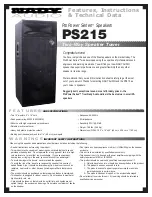
Marine Systems
Aviation Recorders
Rev. 02 Page 3--16
July 29/03
Automatic Identification System
3.1.4.
Installing the GPS Antenna
The correct installation of a GPS antenna is crucial to the operation of the trans-
ponder because the internal transmission synchronization relies on the accuracy of
the time signal obtained from the GPS. It is recommended that a high quality GPS
antenna be purchased from an established source and that all manufactures instruc-
tions be followed with particular attention to cable routing and connector installation.
Some important considerations in GPS antenna installation are:
F
GPS antennas should be located to provide a clear, unobstructed view of
the sky.
F
GPS signals can be affected by RADAR and SATCOM transmissions. As
such, GPS antennas should be positioned below and at least 5 meters
away from RADAR and SATCOM antennas and outside of the beam path.
F
GPS signals can also be affected negatively by VHF and HF transmis-
sions, and the GPS antenna should be positioned at least 3 meters from
these types of antennas.
F
The GPS antennas can be flat mounted onto any surface but it is recom-
mended that it be elevated from the deck surface (20--30 cm) to prevent
ice or spray from negatively impacting the signal reception.
F
Recently, it has been identified that certain makes/models of TV antennas
can drastically interfere with GPS reception. As such, the installer should
place the GPS antenna as far away from any shipboard TV antennas as
possible and confirm that any antennas used on board are not ones which
have been exhibited GPS interference problems.
To install the GPS antenna, perform the following:
(Refer to Figure 3--9 and Figure 3--10.)
(1)
Position the antenna mounting bracket and/or antenna mast on a rigid and
structurally sound surface.
(2)
Install the antenna on the antenna mount.
(3)
Run the coaxial cable from the antenna to the transponder location through an
existing throughhull. Use only high quality RG59 coaxial cable and keep cable
length as short as possible to reduce signal attenuation.
(4)
Trim cable to length leaving a few inches slack at the transponder.
(5)
Attach the connectors to the end of the coaxial cable.
(6)
Connect the cable to the transponder. Soldering the connection is not required.









































